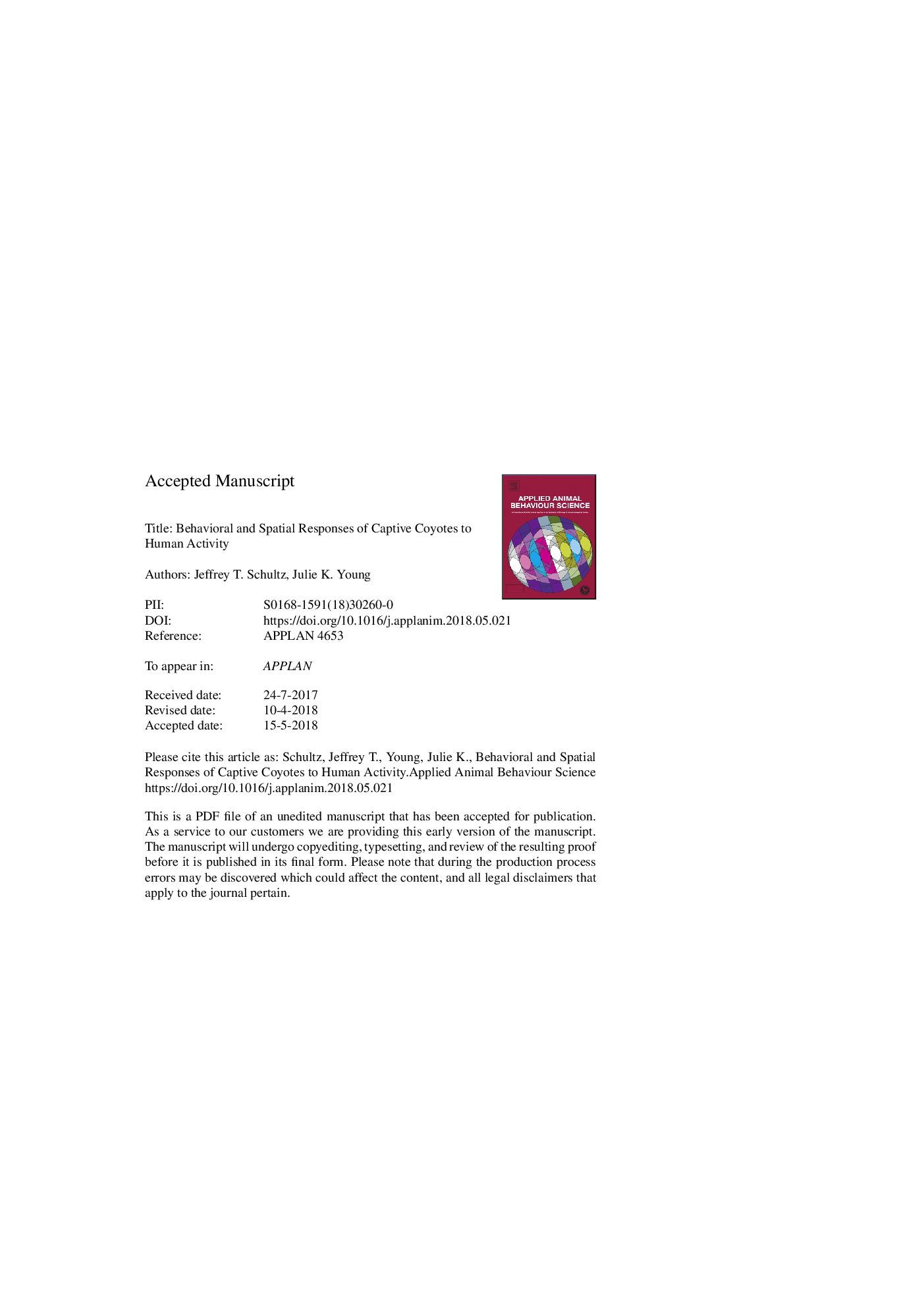| کد مقاله | کد نشریه | سال انتشار | مقاله انگلیسی | نسخه تمام متن |
|---|---|---|---|---|
| 8882717 | 1625301 | 2018 | 25 صفحه PDF | دانلود رایگان |
عنوان انگلیسی مقاله ISI
Behavioral and spatial responses of captive coyotes to human activity
ترجمه فارسی عنوان
پاسخ های رفتاری و مکانی کویوت اسیر به فعالیت های
دانلود مقاله + سفارش ترجمه
دانلود مقاله ISI انگلیسی
رایگان برای ایرانیان
کلمات کلیدی
موضوعات مرتبط
علوم زیستی و بیوفناوری
علوم کشاورزی و بیولوژیک
علوم دامی و جانورشناسی
چکیده انگلیسی
Human interactions can alter an animal's behavior and utilization of its surroundings, and how this impacts the welfare of some captive wild animals is of growing concern. Structural enrichment shelters offer weather protection, reprieve space from other animals or humans, or resting space. Perimeter or open space may be important during periods of activity, such as foraging or play. This study addressed the effects of human activity on coyote behavioral budgeting and enclosure utilization. We predicted that human activity would affect coyote behavior and spatial utilization of enclosure space. Specifically, we hypothesized that human activity would prompt vigilant and other active behavior at enclosure perimeters, thereby reducing inactive behavior at shelter structures. Thirty male-female coyote pairs were observed while experimentally exposed to one hour of human activity and one hour with no human activity for 16 observation days over the course of a 28-day test period. Behavior was categorized (vigilant, not active, active) and enclosure features were identified as three discrete areas (perimeter, open area, enrichment structure). A log-linear model using scan data showed that behavior significantly varied by enclosure feature (Pâ¯<â¯0.01), and human activity significantly affected captive coyote behavior (Pâ¯<â¯0.01) and enclosure feature utilization (Pâ¯<â¯0.01). Non-parametric Mann-Whitney U tests using observed proportions at each condition of human activity showed that human activity increased vigilant behavior (Pâ¯<â¯0.01) while reducing inactive behavior (Pâ¯<â¯0.01). Additionally, during periods of human activity, coyotes decreased utilization of open areas (Pâ¯<â¯0.01) and enrichment structures (Pâ¯<â¯0.01) and increased perimeter use (Pâ¯<â¯0.01). This study illustrates that captive animals may switch activity levels in the presence of humans and may not choose more complex environments when active behaviors are stimulated. Thus, wild animals in captivity may benefit from having the choice to utilize multiple types of habitat, depending upon their natural biological tendencies.
ناشر
Database: Elsevier - ScienceDirect (ساینس دایرکت)
Journal: Applied Animal Behaviour Science - Volume 205, August 2018, Pages 83-88
Journal: Applied Animal Behaviour Science - Volume 205, August 2018, Pages 83-88
نویسندگان
Jeffrey T. Schultz, Julie K. Young,
